Website Temporary Closed
Tiger Game Com
The Game.Com (pronounced in TV commercials as "game com", not "game dot com" and not capitalized in marketing material) was a handheld game console released by Tiger Electronics in September 1997. It featured many new ideas for handheld consoles and was aimed at an older target audience, sporting PDA-style features and functions such as a touch screen and stylus. However, Tiger hoped it would also challenge Nintendo's Game Boy and gain a following among younger gamers too. Unlike other handheld game consoles, the first game.com consoles included two slots for game cartridges and could be connected to a 14.4 kbit/s modem. Later models reverted to a single cartridge slot.
Titles released at game.com's launch included Indy 500, Duke Nukem 3D and Mortal Kombat Trilogy, along with Lights Out which came packaged with the system. Tiger also produced equivalents to many Game Boy peripherals, such as the compete.com serial cable allowing players to connect their consoles to play multiplayer games or exchange high scores. Branded items such as an AC adapter, earphones, and a carry-case were also made available.
[collapse collapsed title=read more...]
Many of the game.com's extra features had only limited functionality compared to modern portable devices. The touch screen had a fairly low sensor resolution along with no backlight, so it lacked precision and made it hard to see the on-screen controls. Entering phone numbers, addresses or the like was cumbersome. As with most portable devices from the 1990s, data storage was entirely dependent on a button battery, and failure of this backup battery would erase any high scores or information stored on the console.
The Lights Out cart which came bundled with the consoleTiger failed to sell the game.com to an older audience. While they were able to obtain more mature-themed game licenses like Mortal Kombat, Duke Nukem, and Resident Evil, few of these portable adaptations were developed by their original creators, or kept to the spirit of the original games. For example, the FPS Duke Nukem was presented in the first person, and while shooting does happen, the manner in which it is handled is far from that of the typical First Person Shooter: the player shifts around a room one tile at a time, always facing forward, and presses the fire button if an enemy happens to obstruct his gun. Turning, strafing, jumping, and the finer subtleties of aiming are thus rendered non-existent.
Most game development, even on licensed games, was done in-house. As such, SDKs were not known to be widely available, and the third party development that has always been crucial to the survival of any gaming platform was absent.
At the time, the platform was almost completely ignored by the gaming press. Tiger used provocative and potentially insulting marketing, including controversial slogans such as "It plays more games than you idiots have brain cells", which may have lost it supporters instead of gaining them.
In an effort to revitalize their low sales, Tiger would later release the game.com Pocket Pro. This was a smaller version of the game.com which had the same specifications as the original except that it had a single cartridge slot and required only two AA batteries. The initial version of the Pocket Pro featured a frontlit screen (advertised as backlit) and is distinguished by its rough-textured black case. A subsequent re-release omitted the frontlight and came in four translucent colors (green, blue, pink, and purple).
This re-release enjoyed very limited success, and the console would be canceled in 2000, along with its exclusive internet service. Most of the console's problems were due to a small lineup (only 20 games), poor quality of games, lack of third party support, poor distribution, and poor marketing. Moreover, its display, like the original Game Boy's, suffered from very slow screen updates (known as "ghosting"), which makes fast moving objects blur and particularly hurt the fast-moving games Tiger sought licenses for. The game.com Pocket Pro had a slightly better display than the first model — on par with the Game Boy Pocket's one — with less of a ghosting problem.
While the game.com was a commercial failure, it is notable that similar features were later used with great success by Nintendo in their DS handheld console. The game.com was the first console to use a touchscreen, the first to include basic PDA-functions, the first to allow two game carts to be inserted at once and the first to allow internet access. It is arguable that the basic concept of the game.com was a strong one, but the actual implementation of those concepts was completely botched by Tiger Electronics, and severely limited by the technology of the mid-1990s. When Nintendo implemented the same basic ideas on the DS in 2004, the result was extremely successful both commercially and critically.
[/collapse]
- HOME


- PRODUCTS

- 3DO
- Amiga CD32
- Amstrad GX4000
- Atari 2600
- Atari 7800
- Atari Jaguar
- Atari Jaguar CD
- Atari Lynx
- Bandai Wonderswan
- Coleco
- Colecovision
- Famicom
- Famicom Disk System
- Grandstand
- JAMMA
- Mattel Intellivision
- MB
- Microsoft Xbox
- MSX
- Neo Geo AES
- Neo Geo CD
- Neo Geo MVS
- Neo Geo Pocket
- Nintendo 64
- Nintendo Game and Watch
- Nintendo Gameboy
- Nintendo Gameboy Advance
- Nintendo Gameboy Colour
- Nintendo Gamecube
- Nintendo NES
- Nintendo Virtual Boy
- PC Engine
- PC Engine CD
- Philips CDI
- Sega 32X
- Sega Dreamcast
- Sega Game Gear
- Sega Genesis
- Sega Master System
- Sega Mega CD
- Sega Megadrive
- Sega Nomad
- Sega Saturn
- Sony Playstation
- Sony Playstation 2
- Super Famicom
- Super Nintendo
- Texas Instruments
- Tiger Game Com
- Tomy
- Vectrex
- Japanese Video Game Imports
-

- MODIFICATIONS

- Switchless Modification
- Modification Sega 32X
- Modification Sega Dreamcast
- Modification Sega Megadrive
- Modification Neo Geo AES
- Modification Neo Geo CD
- Modification Nintendo NES
- Modification Sega Master System
- Modification Sega Mega-CD
- Modification Sega Nomad
- Modification Sega Saturn
- Modification Super Nintendo
-

- TECHNICAL INFO


- NEWS


- ABOUT US


- MEMBERS


- CONTACT US


Log on
x
Just In!

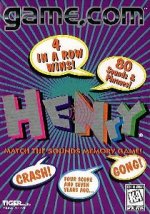
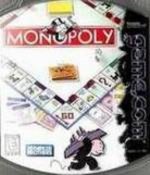

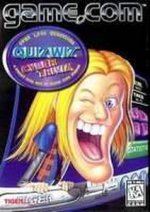

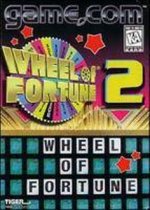

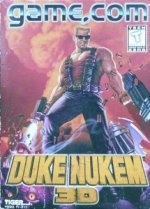
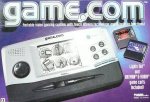


 Save time
Save time